
New Photos
September 16, 2006
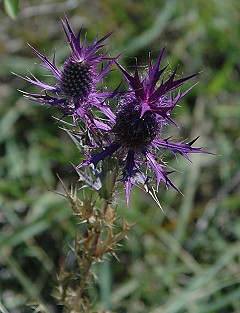 |
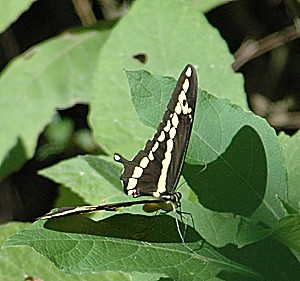 |
| Fall is definitely coming, even though it's hot again--the eryngo, though very short this year because of drought, has turned a gorgeous purple, and on its far side, a green lynx spider, Peucetia viridens, has made her nest. | We still have giant swallowtail butterflies, Papilio cresphontes, in the woods. This one, on the coolest morning this week, stopped in a sunny spot to spread its wings and recharge its batteries before fluttering on. |
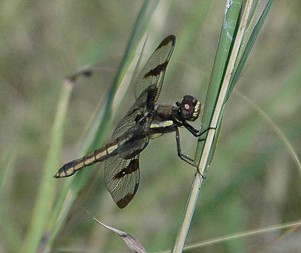 |
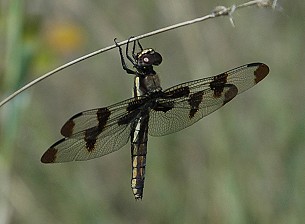 |
| This female Twelve-spotted Skimmer, Libellula pulchella, was laying eggs in the Owl Pavilion water feature last Monday, just as I was about to put the aquatic plants in. Not until I got back to the house and figured out what kind of dragonfly it was, did I learn that these insects prefer ponds without vegetation. This was a striking chocolate brown and bright yellow dragonfly, a strong flier...and best of all, a new species for the list. | |
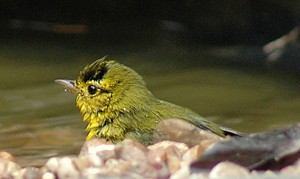 |
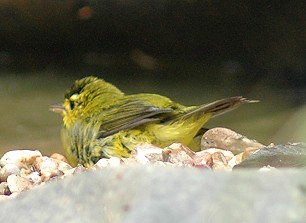 |
| On Saturday, we discovered a leak in the "stream" section of the Owl Pavilion water, and had to rework it. In the process, all the gravel I'd put in a lower section was dumped in the first pool after the tub under the drip. I spread it a little to make a kind of beach. Within minutes, a Wilson's Warbler, Wilsonia pusilla, flitted over and began playing in the water at the edge of the gravel beach. It flew up, dove down, fluttered and bounced around making photography difficult, but I did get these two shots of it with its feathers in spikes. | |
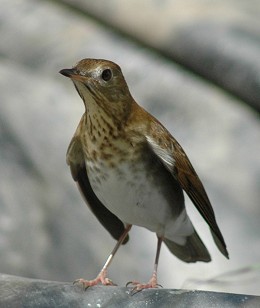 |
|
| As soon as the Wilson's Warbler had flown away, I changed memory cards in the camera, as I was down to only 25 shots. And I was glad I had, because the next bird that came to water was another new species--completely new to me as well as the place. Several species of thrush migrate through in the fall...and I almost never see any of them. So I had to bring the images back to the house and check the reference books there...this is, I believe, a Swainson's Thrush, Catharus ustulatus. The regional guide says it's a rare fall migrant, but the other possibility, a Veery, is accidental--even rarer. A handsome bird, nonetheless. | |
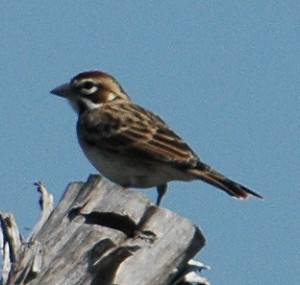 |
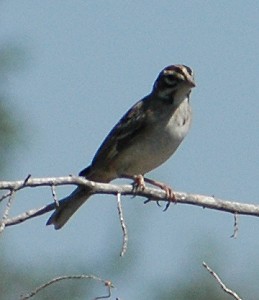 |
| Another new species for the place--one I'd been looking out for--is the Lark Sparrow, Chondestes grammacus. They have beautifully marked heads, and when not molting have a bold black "breast-pin." A small flock of them showed up at the Owl Pavilion water, perching on the brushpile and in cedar trees. | In this frontal view, you can just see a faint mark where the black mark will be in breeding season. This is probably an immature. Lark sparrows are supposed to be "common permanent residents" according to the regional guide, but I hadn't seen them before. This one has an injury or deformity to the right foot (visible when I blow up the pictures of this bird.) |
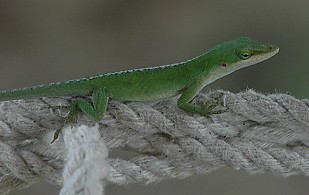 |
|
| Finally, a small green anole who apparently considered the hammock at Owl Pavilion its own personal playground. | |
![]()

